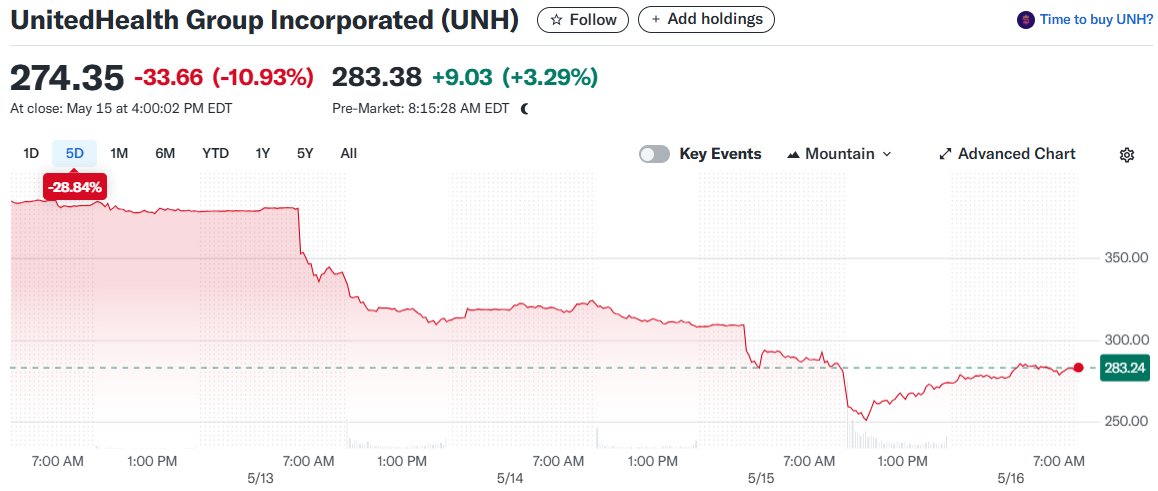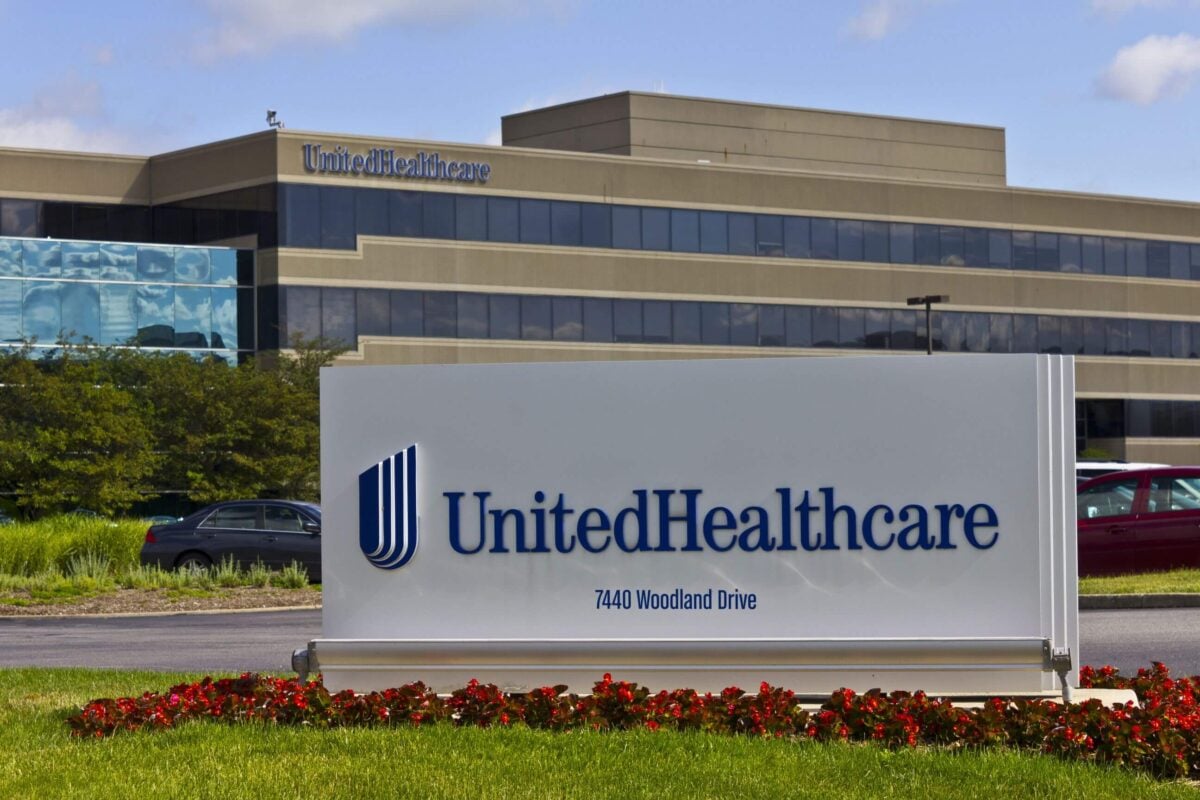TLDR
- Stephen Hemsley returns as UnitedHealth CEO with a $61M pay package, mostly in stock options vesting after three years
- UNH shares have fallen 59% from their peak six months ago
- The company suspended its 2025 earnings outlook on May 13 and announced immediate CEO transition
- Higher-than-expected healthcare utilization rates are squeezing profit margins
- Despite current struggles, the company’s dividend yield has risen to 3.3% at recent prices
UnitedHealth Group’s board has turned to a familiar face to guide the healthcare giant through turbulent waters. Stephen Hemsley, who previously led the company for more than a decade until 2017, has returned as CEO, replacing Andrew Witty who departed on May 13.
Hemsley, 72, takes the helm during a challenging period. UnitedHealth has seen its stock price plummet by more than half in the past month following disappointing first-quarter results and reduced earnings projections.

The returning CEO will receive a pay package worth $61 million, consisting primarily of stock options valued at $60 million that vest after three years, plus a $1 million annual salary. Notably, his compensation package doesn’t include an annual bonus, an unusual arrangement for a CEO of such a large company.
The stock options will vest all at once after three years without performance criteria that have become standard in modern executive compensation plans. This structure suggests Hemsley’s appointment is expected to last at least three years.
His compensation agreement includes provisions that would allow him to keep the stock options in most circumstances if he leaves before the three-year mark. If removed from his position after the first year, the options would continue to vest for two years while he would be barred from working for competitors.
What Went Wrong
UnitedHealth’s current problems stem from healthcare expenses outpacing the monthly premiums it collects. The company has been particularly poor at anticipating this trend compared to its competitors.
On April 17, UnitedHealth adjusted its 2025 earnings outlook downward, from a range of $28.15-$28.65 per share to $24.65-$25.25 per share. Less than a month later, on May 13, the company took the unusual step of suspending its guidance altogether.
During a May 13 conference call, UnitedHealth President and CFO John Rex identified two key issues affecting profit margins. First, new members’ health status isn’t as robust as anticipated. Second, utilization within the Medicare Advantage program has accelerated beyond previous projections, with the trend spreading to other areas.
The situation has been so uncertain that on May 15, UNH shares fell to a level 59% below their peak from six months earlier. The stock now trades at approximately 10.7 times trailing earnings, an ultra-low valuation for the healthcare giant.
Recovery Prospects
Despite current challenges, there are reasons for optimism about UnitedHealth’s long-term prospects. While the company mispriced premiums for 2025, it can adjust pricing for 2026. Management is already incorporating higher costs into Medicare Advantage bids due in June.
UnitedHealth maintains structural advantages over competitors. Its integrated-care strategy can offer savings that smaller, less-integrated competitors can’t match. Through Optum Health, it employs around 10% of America’s physicians, likely making it the country’s largest physician employer.
The company also operates Optum RX, one of the three largest pharmacy benefits management businesses, giving it strong negotiating power. This integrated approach has historically helped UnitedHealth deliver consistent earnings growth.
For income-focused investors, the stock’s beaten-down price has pushed its dividend yield to 3.3%. Over the past decade, UnitedHealth increased its dividend by 320%. While dividend growth may slow in the near term, the current payout of $8.40 per share annually appears sustainable even if 2025 earnings decline substantially.
Though management has suspended specific guidance for 2025, they maintain confidence in generating double-digit percentage earnings growth over the long run. Even with more modest growth, the current valuation could provide opportunities for patient investors.
Hemsley helped transform UnitedHealth from an insurance company into a $400 billion conglomerate during his previous tenure. Shareholders are hoping his return signals a path back to the steady earnings growth that characterized his earlier leadership.
The most pressing task for the returning CEO will be addressing the utilization trends that have thrown the company’s forecasting off track. How quickly Hemsley can right the ship will determine whether UnitedHealth can return to its position as a healthcare industry stalwart.






